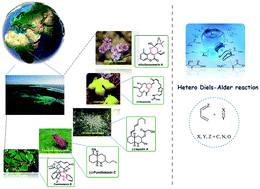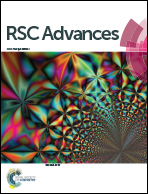Recent applications of the hetero Diels–Alder reaction in the total synthesis of natural products
Abstract
The synthetic utility and potential power of the Diels–Alder (D–A) reaction in organic chemistry is evident. These significances have been extended to the synthesis of a plethora and wide variety of heterocyclic compounds via [4 + 2] cycloaddition reactions, the so called hetero Diels–Alder (HDA) reaction. In this work we try to focus on the scope and preparative synthetic applications of the HDA reaction as a key step in the total synthesis of natural products.


 Please wait while we load your content...
Please wait while we load your content...